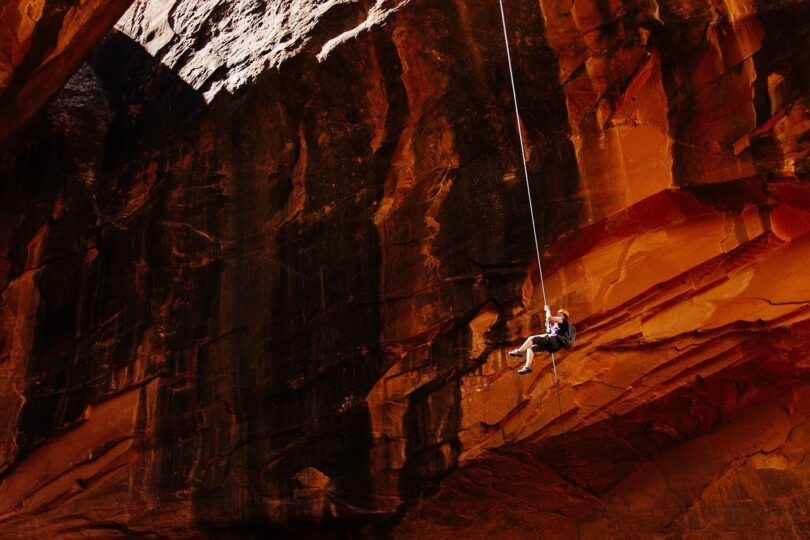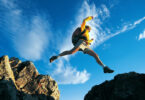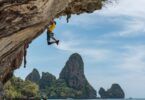You have seen people hiking, be it mountaineering on Mount Everest, bouldering, going up on ice, or trad climbing. These have fascinated you so much that you have started practicing in your gym.
But now you want to improve yourself further, go exploring more diverse options. You’re just not sure how to push yourself further in this journey and what things you need to keep in mind.
These eight tips that we have gathered will surely help you improve your technique!
Let’s get you started with what climbing grades are so that you can decide where to start and how to make your game strong!
What Are Climbing Grades?
Climbing grades determine the difficulty of a mounting route, whether it’s easy, moderate, or difficult. Generally, these grades were developed with technical rock mounting (trad and sports climbing) in mind.
Among the two popular systems of climbing grades used, the Yosemite Decimal System (YDS), which is the American style of grading, ranges from grade 1 (hiking) to 5 (technical climbing). The other system is French, which has a different grading system. In both systems, there are four levels of difficulty: beginner, intermediate, advanced, and elite.
Before starting for a location, it’s better to get a climbing grade overview of that place to see if your level of expertise matches or if you can climb it safely. For insights and useful information regarding mounting, you can click here.
Why You Need to Use Climbing Grades
Difficulty can vary based on the construct of the location and its route. If you are just starting to learn, you must know the climbing grade of a route to make sure you’re fit to climb it.
Environmental conditions can change a route over the years, so the difficulty level might also change. The style that you practice will also determine the level of difficulty that you can face. And, of course, your physical and psychological conditions matter too.
For example, bouldering has a different grading compared to trad climbing. The Yosemite Decimal System only applies to rock mounting, not to ice or mixed scaling.
How to Determine Climbing Route Grades
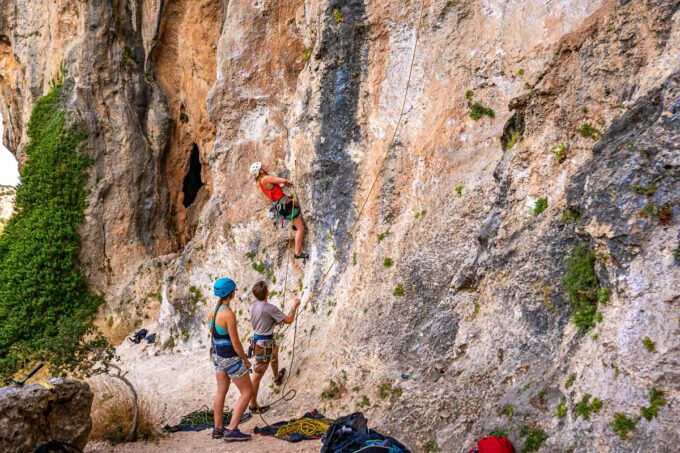
- Source: explorersweb.com
There are quite a few factors to consider to determine route grades. It depends on the length and endurance needed, the physical and psychological difficulty of going up, the quality of the terrain, the angles of the holds, and the sun exposure.
If you’re a beginner, you’ll need to hit the gym to train yourself physically and practice regularly to get used to footing and gain hold of edges.
Once you reach level 5, you’ll see that the grades have decimals and letter grades a, b, c, and d. Suppose you can climb the grade 5.10b. 5 is the level of difficulty, .10 determines the difficulty of the moves and holds involved, and b is the difficulty of the climb in more depth.
Why Do You Need to Improve Your Climbing?
Climbing is an enjoyable activity if you know how to do it properly. If you start without any prior practice, you’ll have to face many slips that might lead to injuries.
If you’re a beginner, you can plan a hiking trip as your introduction to ascending. Once you get accustomed to hiking on these heights and angles, you can move forward to experiment on other terrains that are steeper and taller.
There are eight tips that you can follow to improve your technique. Let’s have a look at them!
Use Your Legs First!
Many beginner climbers make a common mistake: using their hands first. You may think that you have enough upper body strength to pull yourself up. But avoid doing this at any cost!
You’ll fatigue your muscles quicker. Also, stretching out your upper body will create more distance from the fingers to the toes, leaving less room to move and shift.
To avoid these, always start with your legs. Your leg muscles are stronger, so you can initiate the upper movement and then carry yourself up with your hands. You will also have more scope to move and shift easily.
Learn How to Backstep
Back Steps are vital if you want to climb rocks and other terrains. Sometimes you need to shift into a new position to get closer to the wall and straighten your arm. Doing a backstep can help you with this and conserve your energy.
How to do a backstep, you may ask? You need to place your foot on the foothold so that the outside of your foot is facing the wall. This will also put the outside of your hip on that leg towards the wall.
Backstep may seem counterintuitive at first, and it definitely needs some practice. But with consistency, this shift will be more fluid, and you can change positions easily.
Practice Standing on Bad Footholds
Some footholds may seem bad for you at first, so you will want to avoid them. But it’s a good idea to put those bad footholds to use. Practicing standing and mounting on these footholds will exercise your mounting muscles even better, building your trust in those legs even more.
Start doing so by moving up sideways on the transverse walls of your gym. Once you start doing it confidently, limit yourself on where you put your feet. Increase the distance between your legs and step on smaller footholds.
With practice, you’ll be able to push yourself upwards by standing in smaller places. You’ll be able to ascend rocks confidently, of course with the help of some essential gears and equipment. Also, practice the same while descending. It will make you explore more options.
The Closer the Better!
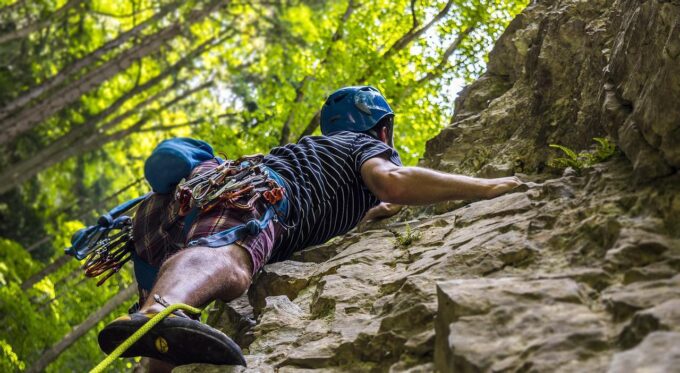
- Source: pixabay.com
Always keep your body closer to the wall. It will help you with your balance by keeping your center of gravity on a safer level. If you let your body fall away from the wall, it will put more force on your arms. Your muscles will consume more energy, and fatigue will kick in.
Staying close to the wall will save your energy and carry you to the next move. Moving upwards will also be less challenging for you once your muscles get used to it.
Keep on Climbing
Do you want to get better at it? Then you need to keep on climbing! You’ll get to know the moves by heart and will also be able to know which moves to use under different circumstances.
One tip I can give you is to climb with people who are already on a higher level than you. Watch how they tackle the problems of clambering on new terrains and how they learn from their mistakes. Also, climb more easy terrains to improve your hike time.
Mind Must Be the Master of the Body
You have probably already heard this dialogue, and there’s a good reason for it! You can get panicked quickly with unfamiliar and seemingly dangerous situations. However, you can control this if you train your mind to face these challenges with ease.
The very basic tip I can give you is to breathe. Breathing will help to take a pause and stay calm. It will allow you to reflect a bit and see the available options easily. You will be able to gain more balance and focus on making a smooth climb.
Bring Variation
It’s always okay to practice the same climb frequently. However, if you bring variation to your climbing techniques and the route, you’ll be able to explore more and learn in the process while avoiding reaching a plateau.
Challenge yourself constantly. That’s the only way to level up. Set a target for yourself, and try more challenging climbs until you get a grip of them. Your body will adapt to these stimuli, preparing you for more difficult levels.
Invest in Good Quality Shoes
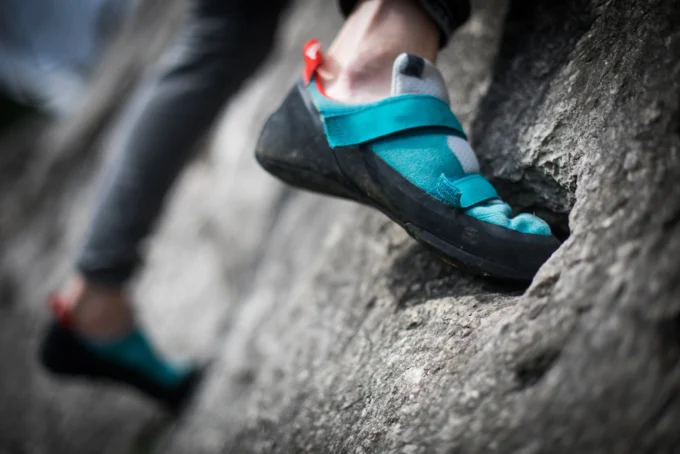
Source: footwearnews.com
Shoes matter a lot when it comes to climbing. Investing in some good shoes will take you a long way. It will keep your feet safe while mounting and allow you to climb on flat and smooth terrains.
Don’t settle for cheap shoes. Chances are, they aren’t built with the mounting standards in mind. Therefore, invest in high-end shoes, as they are made by following specific criteria.
Conclusion
Ascending and descending on steep, rocky routes is a challenging but fun sport, no matter what the type. By learning about the climbing route grades, building up your skills to match these grades, and following the eight tips that we have mentioned, you can improve your technique a lot.
Now go and impress your friends and family!

